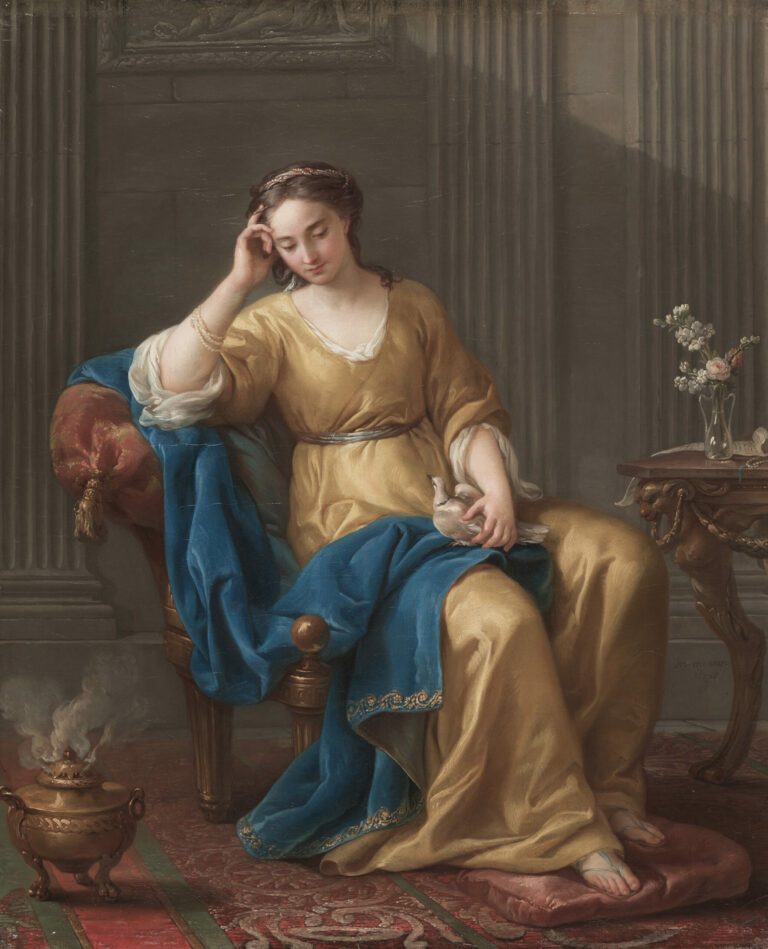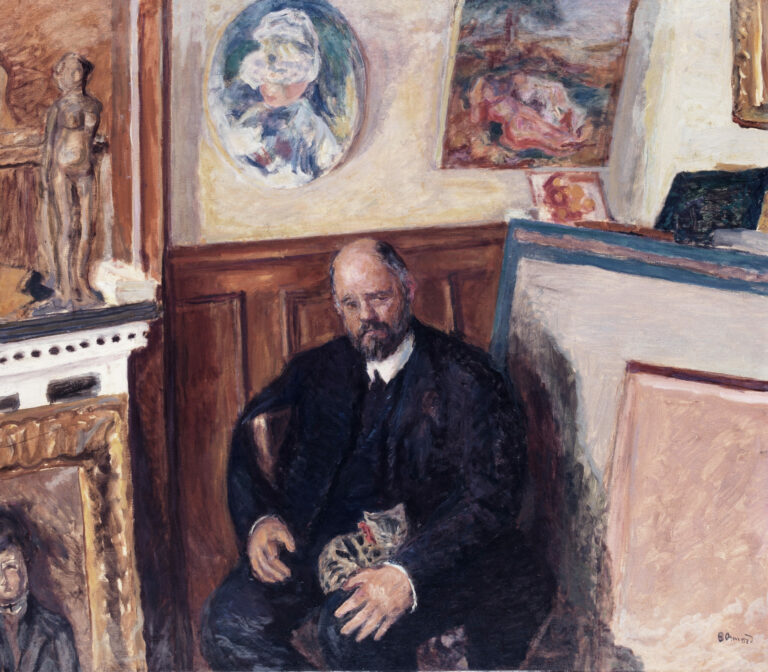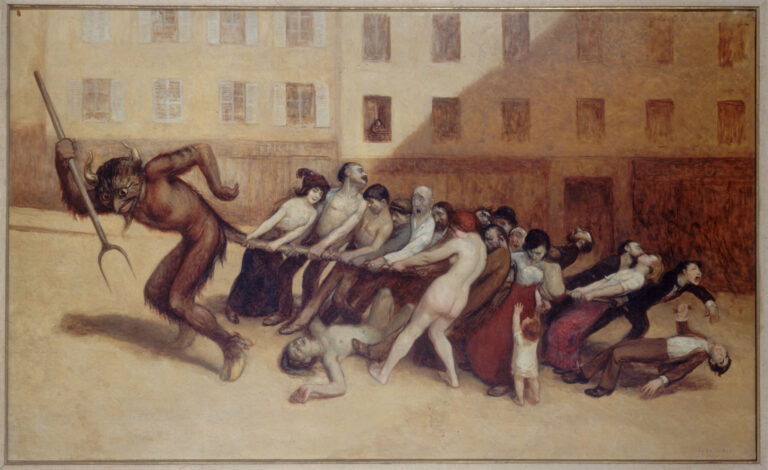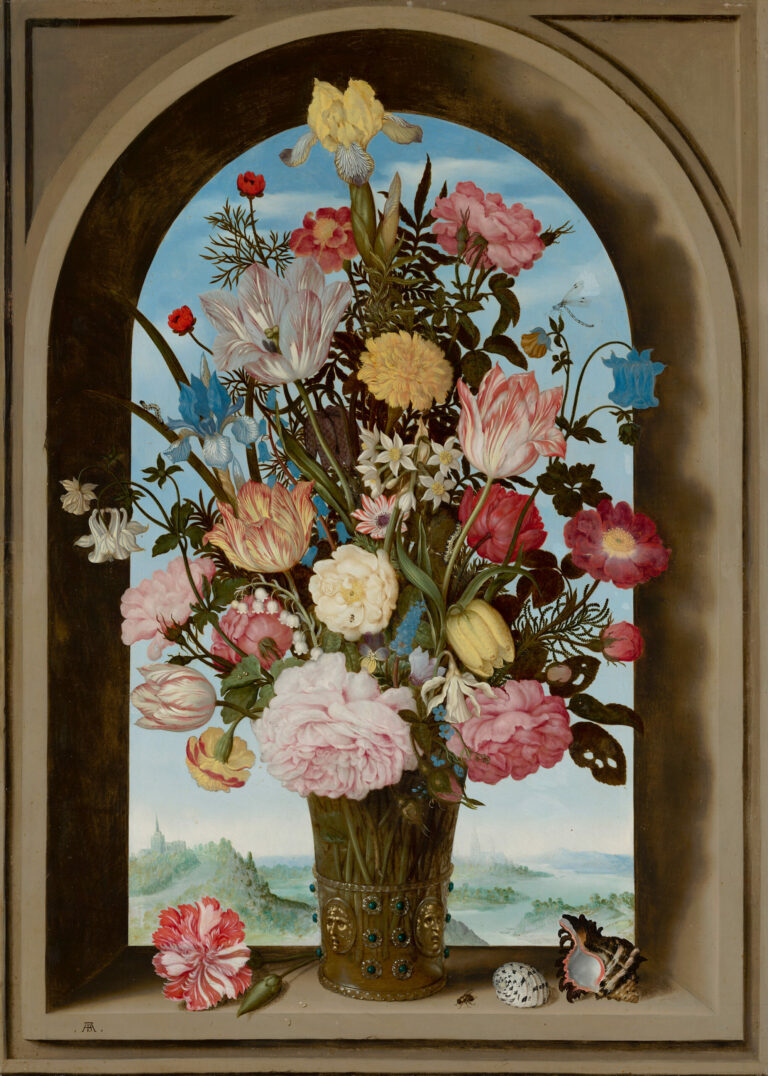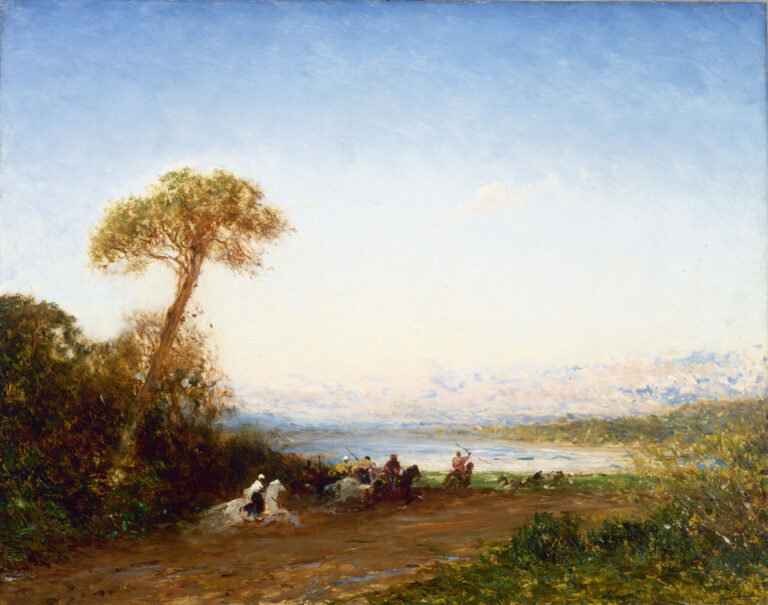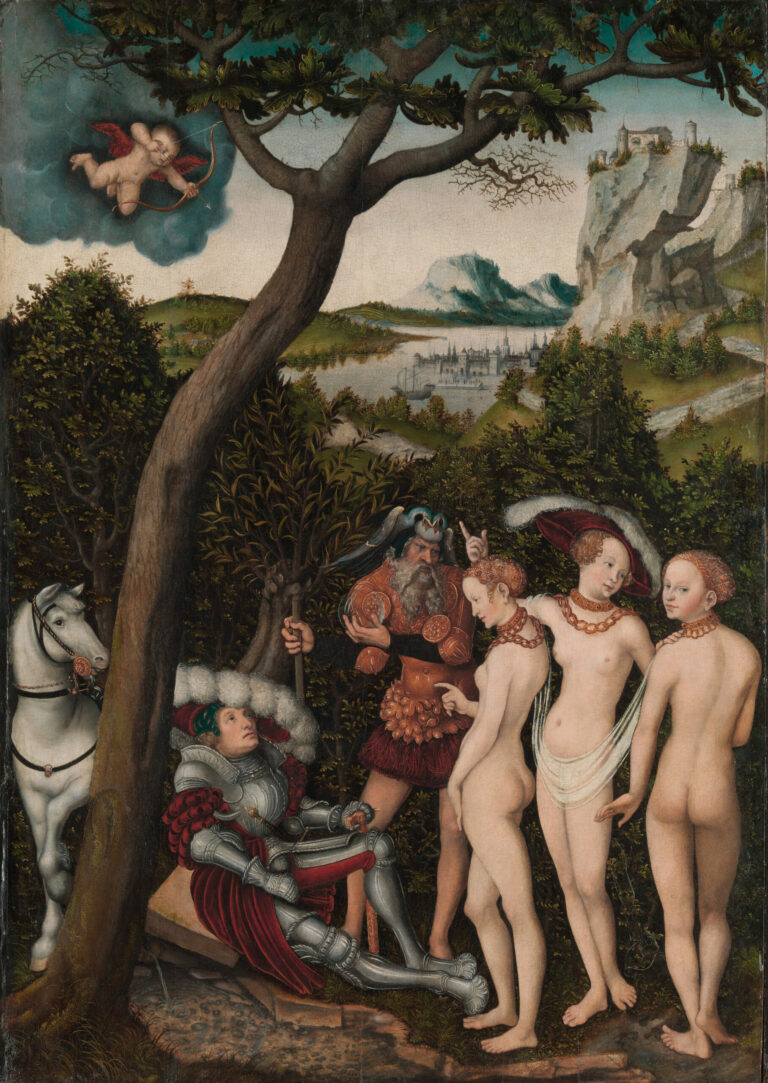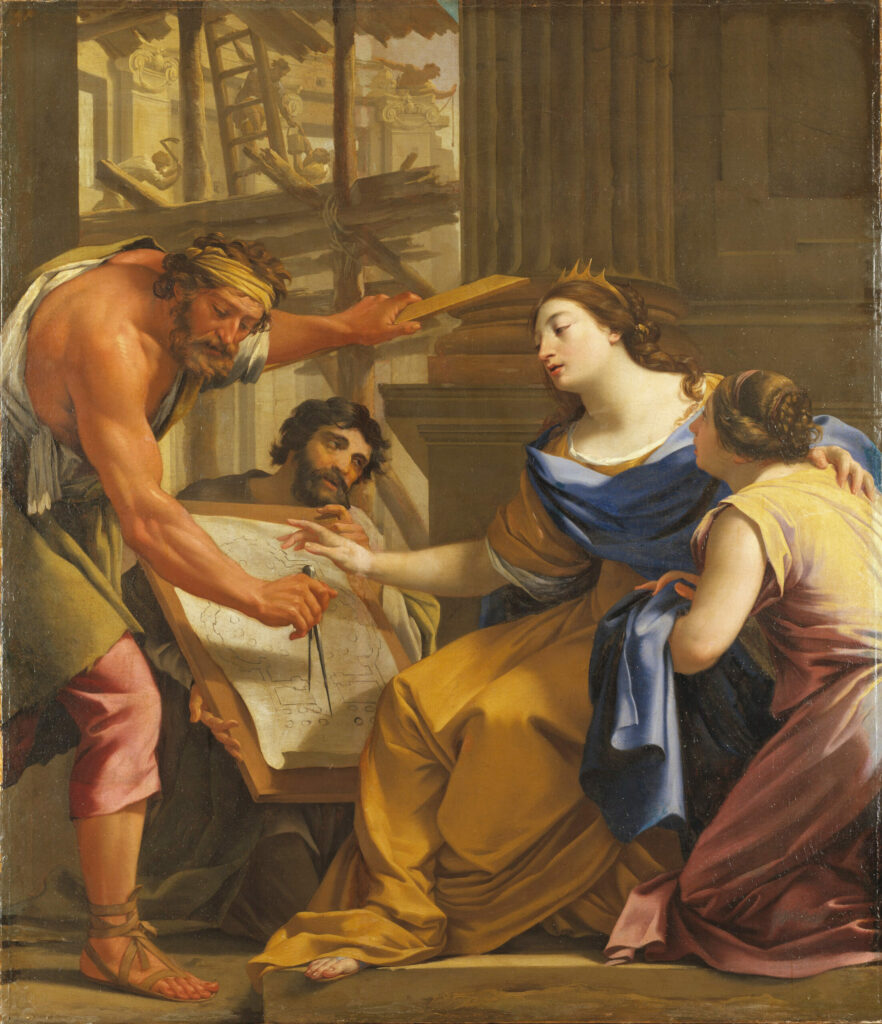
Simon Vouet illustrates here the ancient episode of Artemisia II of Caria (4th century BC), the grieving widow of King Mausolus, supervising the construction of the famous Mausoleum of Halicarnassus.
The baroque composition presents the crowned queen at the center of an architectural consultation. Her authoritative gesture indicates the unrolled plans, while her determined gaze expresses the grandeur of her funerary design. The classical architecture in the background evokes the magnificence of the project, future seventh wonder of the ancient world. Vouet displays here his mastery of the grand French decorative style: sculptural modeling of bodies, sumptuous draperies with learned folds, and refined chromatic palette dominated by golden ochres and deep blues.
Further information
- Artemisia Building the Mausolaeum, by Simon Vouet, early 1640s
- 161 x 139 cm, oil on canvas
- Nationalmuseum, Stockholm, displayed in room 1621, 17th century
- https://collection.nationalmuseum.se/en/collection/item/22229/
Simon Vouet (1590-1649), major figure of French painting during the Grand Siècle, imported Italian baroque innovations. Born in Paris into a family of artists, he departed for Italy where he stayed for fourteen years until 1627. In Rome, he assimilated the lessons of Caravaggio and the great masters, developing a personal style that combined tenebrist naturalism and decorative monumentality. Elected to the Academy of Saint Luke in 1624, he already enjoyed a European reputation. Appointed first painter to King Louis XIII in 1627, he directed the great royal decorative projects and trained a generation of French artists, notably Charles Le Brun. His prolific workshop transformed French taste, abandoning late mannerism in favor of a tempered baroque classicism. Vouet excelled in mythological allegories, religious compositions, and court portraits. His death in 1649 marked the end of a decisive artistic period for the French school.

